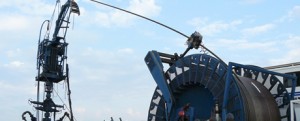
The EasyReach extended-reach CT service delivers an optimal solution for servicing long horizontal wells. Delivering predictable, repeatable, and reliable performance.
Houston – American international oilfield services company, Baker Hughes has revealed the EasyReach extended-reach coiled tubing (CT) service.
Comprised of simulation software, a lubricant specifically designed for downhole conditions and a field-proven fluid hammer tool, the service can help increase the lateral reach of CT systems. The company says this holistic approach helps to reduce risk and improve well economics while enabling operators to reach total depth (TD) in extended-reach laterals.
The EasyReach service provides more predictable performance during cleanouts, acidizing, stimulations and other applications in long horizontal wells. The proprietary CIRCA modeling software helps the company deliver a solution to address a well’s unique profile and challenges, using the hammer tool, lubricant or both.
The EasyReach hammer tool periodically interrupts fluid flow to vibrate the tool and generate traction forces to pull the tubing deeper into the well. These periodic pulses also reduce friction and delay the onset of helical buckling and lockup. The EasyReach lubricant is engineered to provide more consistent performance in extreme environments, including high-pressure/high-temperature. It helps to reduce mechanical friction with improved sliding efficiency and higher rates of penetration.
The new lubricant’s performance has been confirmed in a series of field trials. In a recent operation in a horizontal monobore with 5½-in. casing and a lateral length of about 5,100 ft (1,555 m), the lubricant delivered a coefficient of friction of 0.13 in the wellbore (reduced from the default value of 0.24 when no lubricant is used) closely matching the lab test data. This enabled CT to reach TD with enough available weight to activate the deployment packer and complete the job.
Based on the service’s performance in this well, combining the lubricant with the fluid hammer tool would have permitted the operator to perform the desired application in a lateral more than 13,000 ft (3,962 m), or more than twice the length of the existing lateral.


